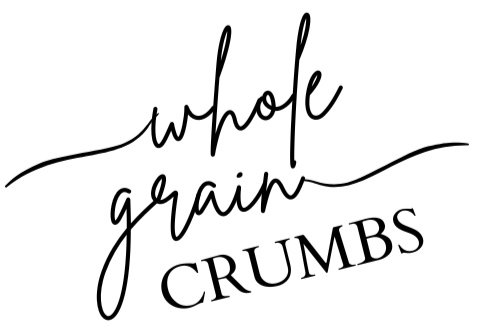The Ultimate Guide to Farro: Ancient Grain, Modern Superfood
What Is Farro?
Farro is a nutrient-rich ancient grain that has made a modern comeback in kitchens around the world. With its nutty flavor, chewy texture, and impressive nutritional profile, farro is a must-have for anyone looking to incorporate more whole grains into their diet. Originating from the Fertile Crescent, farro has been cultivated for thousands of years and was a staple in the diets of ancient civilizations like the Romans and Egyptians.
The term "farro" refers to three species of hulled wheat: einkorn (farro piccolo), emmer (farro medio), and spelt (farro grande). In the U.S., emmer wheat is the variety most commonly sold and labeled as farro. It can be found in whole, semi-pearled, or pearled form, with whole farro offering the most fiber and nutrients.
Nutritional Benefits of Farro
Farro is more than just a trendy grain—it’s packed with important nutrients that support overall health. Here’s a breakdown of what makes farro a whole grain worth adding to your plate:
1. Excellent Source of Fiber
Farro is high in dietary fiber, which helps promote healthy digestion, manage blood sugar levels, and support heart health. A 1-cup serving of cooked farro contains around 5 grams of fiber.
2. Plant-Based Protein
With approximately 6 grams of protein per cooked cup, farro is a great plant-based protein source, especially when paired with other legumes or vegetables.
3. Rich in Vitamins and Minerals
Farro provides essential micronutrients including iron, magnesium, zinc, and B vitamins. These nutrients play critical roles in energy metabolism, immune support, and red blood cell formation.
4. Antioxidant Properties
Like other whole grains, farro contains polyphenols and antioxidants that may help reduce inflammation and protect against chronic diseases.
5. Supports Satiety
The combination of protein and fiber in farro makes it especially satisfying, helping to curb hunger and support weight management goals.
How to Cook Farro Perfectly
Cooking farro is simple, but a few key tips can enhance both the texture and flavor of this grain.
1. Rinse Before Cooking
Rinse farro under cold water to remove any dust or debris. This step is especially important for whole farro.
2. Use Broth Instead of Water
To boost flavor, cook farro in vegetable, chicken, or beef broth instead of plain water. This adds depth and savory notes that elevate your dish.
3. Simmer Like Pasta
Unlike quinoa, farro is best cooked like pasta. Bring a pot of broth to a boil, add the farro, and simmer until tender—about 20–40 minutes depending on whether it’s pearled or whole. Drain any excess liquid and fluff with a fork.
4. Optional: Soak Overnight
For whole farro, soaking it overnight can reduce cooking time and provides it a more tender texture.
Delicious Ways to Use Farro in Your Kitchen
Farro’s hearty texture and earthy flavor make it incredibly versatile in the kitchen. Here are some favorite ways to enjoy this ancient grain:
1. Farro Grain Bowls
Use farro as the base for power bowls topped with roasted veggies, leafy greens, grilled chicken, tofu, or soft-boiled eggs. Drizzle with your favorite dressing or sauce.
2. Hearty Salads
Farro adds satisfying chew and nutrition to salads. Try it with arugula, cherry tomatoes, feta, olives, and a lemon vinaigrette for a Mediterranean twist.
3. Soups and Stews
Add cooked farro to soups and stews for a wholesome, fiber-rich boost. It pairs especially well with mushrooms, lentils, and root vegetables.
4. Stuffed Peppers or Squash
Mix farro with herbs, cheese, and chopped veggies as a hearty stuffing for bell peppers, zucchini, or butternut squash.
5. Breakfast Farro
Transform farro into a warm breakfast bowl by simmering it with milk or plant-based alternatives. Top with cinnamon, berries, chopped nuts, Greek yogurt, and a drizzle of maple syrup.
6. Grain-Based Casseroles
Use farro as the base for casseroles or grain bakes. Combine with sautéed vegetables, beans, a creamy sauce, and a sprinkle of cheese.
Meal Prepping with Farro
Farro is a dream ingredient for meal prep thanks to its durability and versatility:
Batch Cook: Prepare a big batch of farro at the start of the week. Store in the fridge in an airtight container for up to 5 days.
Quick Add-In: Toss pre-cooked farro into salads, stir-fries, soups, and wraps for a quick nutrient boost.
Mason Jar Salads: Layer farro at the bottom of mason jars with your favorite salad ingredients for grab-and-go lunches.
Can You Freeze Cooked Farro?
Yes! Cooked farro freezes beautifully:
Allow farro to cool completely.
Spread on a baking sheet to prevent clumping, then transfer to freezer bags or containers.
Label and date the bags. Freeze for up to 3 months.
Reheat in the microwave or on the stove with a splash of water or broth.
Final Thoughts
Farro is an ancient grain that fits seamlessly into modern meals. Its nutritional benefits, satisfying texture, and culinary flexibility make it an ideal whole grain to keep stocked in your pantry. From nourishing bowls to cozy soups and hearty casseroles, farro offers a delicious and wholesome way to support your health while enjoying real, flavorful food. With a few simple cooking tips and ideas for preparation, you’ll find farro quickly becomes a staple in your weekly meal rotation.



